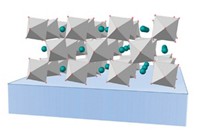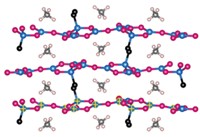Advertisement
Grab your lab coat. Let's get started
Welcome!
Welcome!
Create an account below to get 6 C&EN articles per month, receive newsletters and more - all free.
It seems this is your first time logging in online. Please enter the following information to continue.
As an ACS member you automatically get access to this site. All we need is few more details to create your reading experience.
Not you? Sign in with a different account.
Not you? Sign in with a different account.
ERROR 1
ERROR 1
ERROR 2
ERROR 2
ERROR 2
ERROR 2
ERROR 2
Password and Confirm password must match.
If you have an ACS member number, please enter it here so we can link this account to your membership. (optional)
ERROR 2
ACS values your privacy. By submitting your information, you are gaining access to C&EN and subscribing to our weekly newsletter. We use the information you provide to make your reading experience better, and we will never sell your data to third party members.
Materials
Deep ultraviolet nonlinear optical laser crystals prepared without toxic beryllium
New material’s synthesis also avoids formation of layers that impede performance
by Elizabeth K. Wilson
March 13, 2017
| A version of this story appeared in
Volume 95, Issue 11
Materials scientists have developed a new class of deep-ultraviolet nonlinear optical (DUV NLO) crystals that promise to be less toxic and have better performance than the materials currently used (Angew. Chem. Int. Ed. 2017, DOI: 10.1002/anie.201700540). DUV NLO materials are increasingly being used in the semiconductor industry and are crucial in producing solid-state lasers with wide frequency ranges. The fluorooxoborate KBe2BO3F2, which is the only practical laser material for generating light below 200 nm, has had researchers scrambling for alternatives to avoid further use of toxic beryllium. It also grows in layers, which can reduce its optical properties. Now, a team led by Shilie Pan, vice director of the Chinese Academy of Science’s Xinjiang Technical Institute of Physics & Chemistry, has prepared a class of beryllium-free fluorooxoborate crystals that don’t layer. The team’s strategy involved inserting (BO3F)4−, (BO2F2)3−, or (BOF3)2− groups into three-dimensional boron-oxygen networks. The material works as needed without beryllium, and the synthesis method avoids the formation of terminal oxygen atoms—the existence of which leads to layer formation. One compound in particular, Li2B6O9F2, promises to further “break down the DUV wall for NLO materials,” the researchers report.




Join the conversation
Contact the reporter
Submit a Letter to the Editor for publication
Engage with us on Twitter